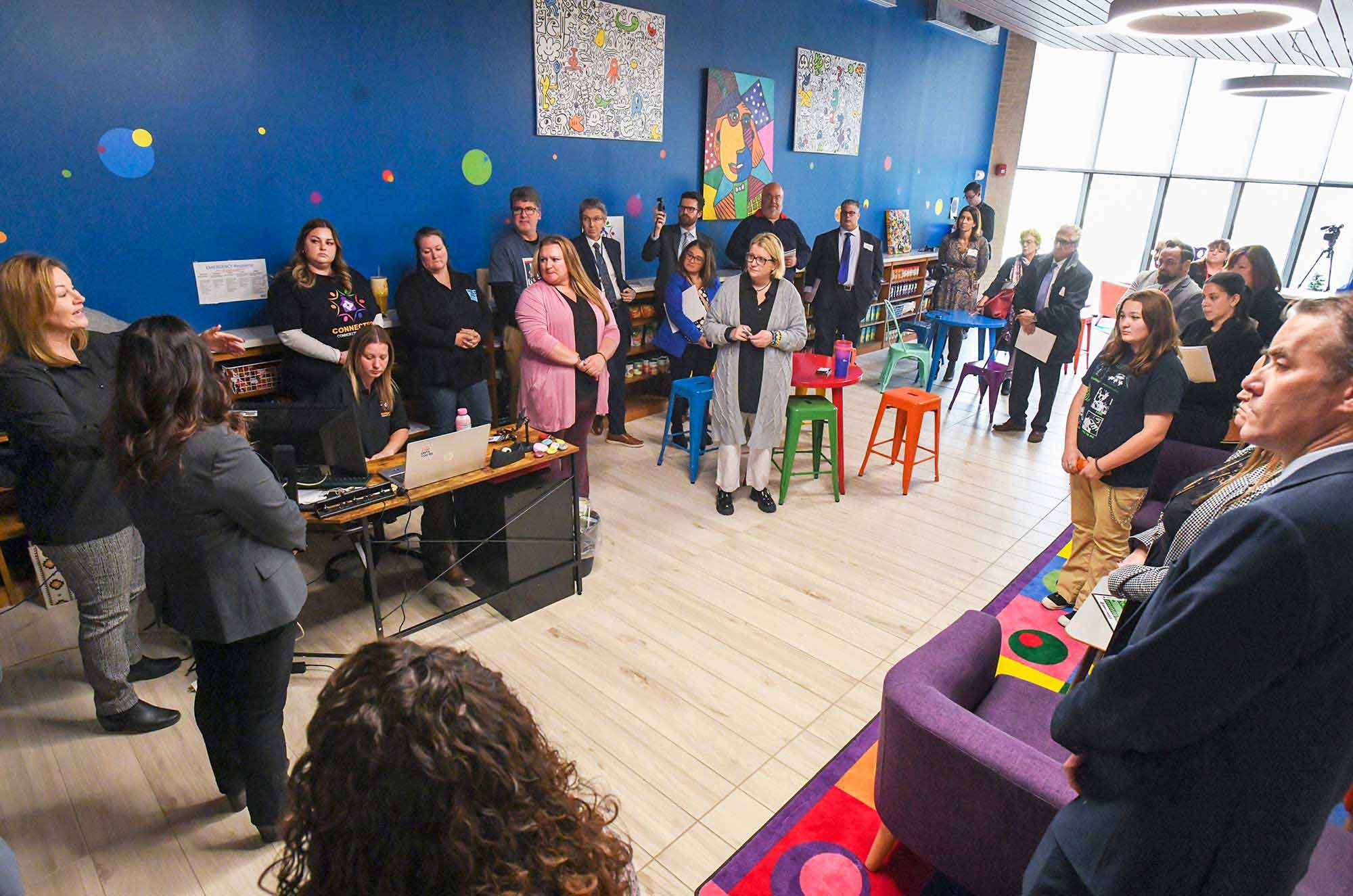NYSUT calls for $100m investment in community schools
n 2013, the small, rural communities of Mohawk and Ilion merged to provide students with more academic and extracurricular options, forming the Central Valley Central School District. In 2021, Central Valley adapted yet again, becoming part of a network of community schools to ensure that students are getting their basic needs, like food and housing, met.

EL-WISE NOISETTE
NYSUT is asking for $100 million in the coming state budget to expand the community schools model across the state, and the union has been inviting lawmakers to tour community schools to learn about the value of this potential investment.
“This is an investment in our school children on the front end,” Person told guests during the visit. “If you want clean streets, if you want empty prisons, if you want a thriving community and public education system, you invest in community schools. Because they invest in communities and support students’ needs wherever they come from.”
Research shows that funds set aside for community schools offer a high rate of return. According to data compiled by the United Federation of Teachers, a $100,000 investment to hire a community school director can bring in more than $600,000 in services and grants to the school community, a six-to-one return on investment. In Central New York, the rate of return is even higher; the Connected Community Schools, which includes schools in Waterville, Rome, Dolgeville and the Town of Webb, reported that the average return on investment is more than $14 for every $1 invested. Central Valley Academy is an exemplary model of how a community school can transform a rural community.
At CVA, the crux of the community school is called the HUB, a physical space where students and services are linked. At the HUB, more than 600 students in the building are welcome to any physical resources they might need — clean clothes, food, hygiene products — with no questions asked and no stigma attached. The HUB is also a space where students — particularly those who may lack the kind of connections found through extracurriculars or athletics — can go to be seen and heard in various student-driven “HUB Clubs.”
The mood is “grab what you need and find a place to belong” said Melissa Roys, co-executive director at Connected Community Schools. CCS is a network that started in Rome in 2016 with support from an American Federation of Teachers grant. It now branches across 15 districts in seven counties. Central Valley joined the network in 2021.
Sixty-four percent of Central Valley students are economically disadvantaged, and co-locating services like mental health counseling, housing referrals, and bi-annual dentist visits at the Ilion school ensure that students and their families can get their basic needs met, which goes a long way toward ensuring that students meet their academic goals.
When Person testified before the New York state Senate in December, she explained that academic performance is inextricably linked with students’ home life.
“When we talk about students and their ability to learn, we often focus on what takes place in the classroom without giving much — or any — consideration to all the factors outside of the school that impact a child’s ability to learn. External factors such as food and housing insecurity must be taken into consideration. A child cannot learn when they are hungry, do not have a permanent home or are living in transitional housing,” Person told the Senate Standing Committee on Cities 2. “Similarly, students with toothaches, headaches or other untreated physical issues will be unable to pay attention in their classes.”
The goal is to avoid “Band-Aid” fixes, and to create sustainable solutions, said Central Valley Superintendent Jeremy Rich. When Connected Community Schools staff are able to take care of ancillary factors like transportation, sneakers and school supplies, it gives educators the ability to focus on their in-school roles, he said.
Community schools play a key role in alleviating childhood poverty. Combatting poverty and its ill-effects will be central to NYSUT’s legislative agenda during the upcoming session. Other key issues include:
- Expanding school meals
- Protecting students and educators from extreme classroom heat
- A New Deal for Higher Ed
- Enhancing CTE programs and experiential learning
- Fixing Tier 6
- Addressing APPR
- Attracting more educators to the profession